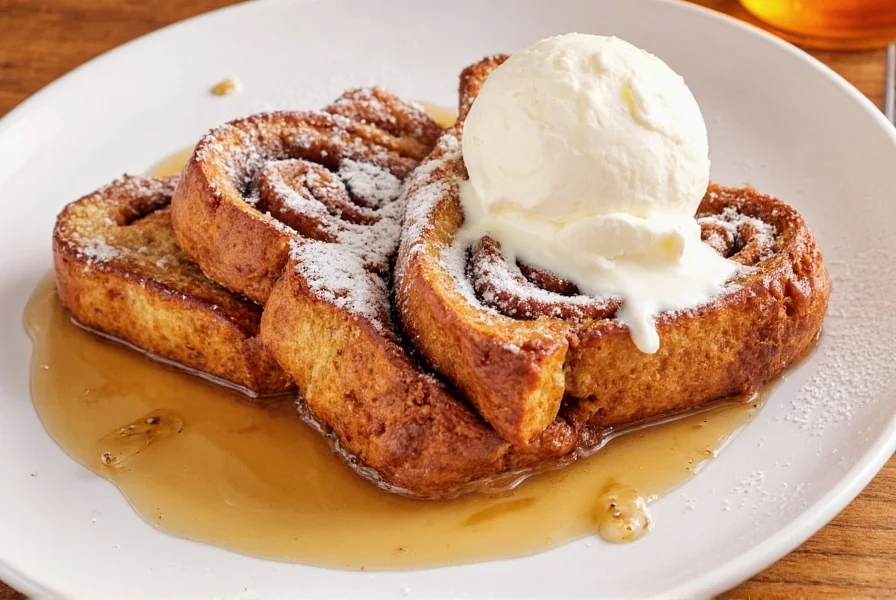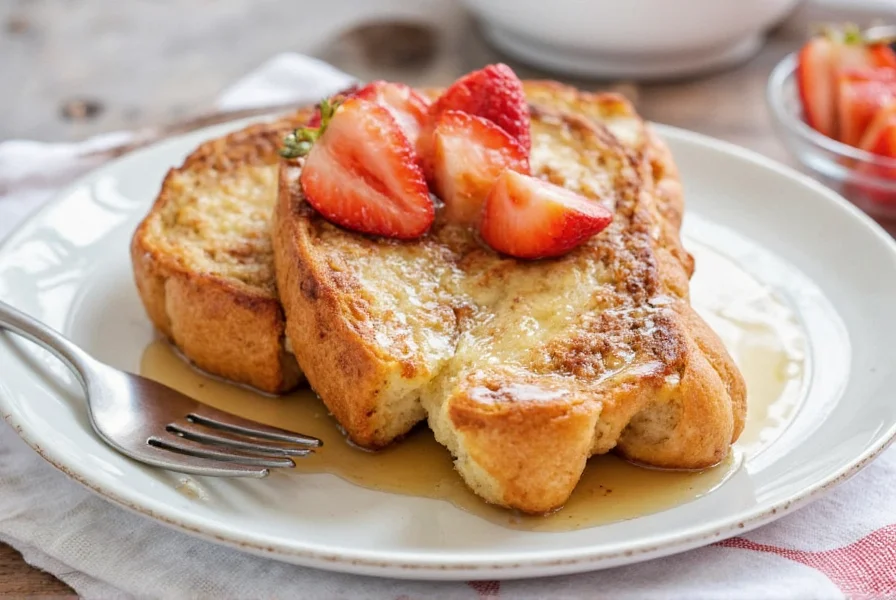The Ultimate Guide to Perfect Cinnamon Roll French Toast
When executed properly, cinnamon roll french toast delivers an extraordinary breakfast experience that elevates the standard french toast with the beloved flavors of a cinnamon roll. Unlike regular french toast that relies solely on post-cooking toppings, this version incorporates cinnamon directly into the batter and features an essential cream cheese component that transforms it from simple breakfast fare to a show-stopping brunch centerpiece.
Essential Ingredients Breakdown
The magic of exceptional cinnamon roll french toast happens through three distinct components working in harmony. Understanding each element's purpose ensures consistent results every time.
| Component | Key Ingredients | Function |
|---|---|---|
| Cinnamon Egg Batter | Eggs, milk, cinnamon, vanilla, pinch of salt | Creates custardy interior while infusing cinnamon flavor throughout |
| Bread Selection | Thick-cut brioche or challah (1-1.5 inches) | Provides structure to absorb batter without disintegrating |
| Cream Cheese Glaze | Cream cheese, powdered sugar, milk, vanilla | Delivers signature cinnamon roll frosting experience |
Step-by-Step Preparation Guide
Follow these professional techniques to achieve restaurant-quality cinnamon roll french toast at home. The process separates into three distinct phases that must be timed correctly for optimal results.
1. Bread Preparation (15 minutes)
Cut thick slices from day-old brioche or challah bread. Slightly stale bread absorbs the egg mixture better without becoming soggy. For authentic cinnamon roll swirls, some chefs create pocketed bread by gently separating the top crust from the interior, inserting a cinnamon-sugar mixture, then reassembling before dipping in batter.

2. Cinnamon Egg Mixture (5 minutes)
Whisk together 4 large eggs, 1 cup whole milk, 2 tablespoons ground cinnamon, 1 teaspoon vanilla extract, and a pinch of salt. The cinnamon quantity is critical—too little won't deliver the signature flavor, while too much creates bitterness. Professional kitchens often toast the cinnamon briefly before adding to enhance flavor complexity.
3. Cooking Technique (10 minutes)
Soak bread slices for exactly 30-45 seconds per side in the egg mixture. Cook on a preheated griddle or skillet at 325°F (medium-low heat) with clarified butter. The lower temperature prevents burning while allowing the interior to cook through. Flip when golden brown (approximately 3-4 minutes per side).
4. Cream Cheese Glaze (5 minutes)
While toast cooks, prepare the glaze by beating 4 ounces softened cream cheese with 1 cup powdered sugar, 2 tablespoons milk, and 1 teaspoon vanilla until smooth. The glaze should be pourable but not runny—adjust milk quantity as needed. Properly made glaze will cling to the warm toast without sliding off.
Pro Tips for Restaurant-Quality Results
- Bread thickness matters: 1.25-inch slices provide ideal structure—thinner slices become soggy, thicker ones won't cook through
- Temperature control: Maintain consistent 325°F heat; fluctuations cause uneven browning
- Soaking time precision: Use a timer—excessive soaking creates mushy texture
- Cinnamon quality: Freshly ground cinnamon from sticks outperforms pre-ground powder
- Glaze application: Pour while toast is hot but not steaming for optimal adhesion
Common Mistakes to Avoid
Even experienced home cooks make these critical errors when preparing cinnamon roll french toast:
- Using fresh bread: Day-old bread has optimal moisture content for absorption
- Rushing the cooking process: Low-and-slow cooking ensures custardy interior without burnt exterior
- Overloading with cinnamon: Excessive cinnamon creates bitterness that overwhelms other flavors
- Incorrect glaze consistency: Too-thin glaze runs off; too-thick doesn't spread properly
- Serving immediately after cooking: Allowing toast to rest 2 minutes improves texture
Variations for Different Dietary Needs
Adapt this beloved recipe for various dietary requirements without sacrificing flavor:
- Gluten-free: Use thick-cut gluten-free brioche and ensure all ingredients are certified GF
- Dairy-free: Substitute coconut milk for dairy milk and vegan cream cheese for the glaze
- Lower sugar: Reduce glaze sugar by 25% and add 1 teaspoon lemon juice to maintain balance
- Protein boost: Add 1 scoop unflavored protein powder to the egg mixture
Serving and Presentation Tips
Elevate your cinnamon roll french toast presentation with these professional techniques:
- Serve on warm plates to maintain temperature
- Add a small pat of butter that melts into the warm toast
- Garnish with edible cinnamon sticks for visual appeal
- Pair with complementary flavors like apple compote or bourbon-maple syrup
- For brunch service, prepare components separately and assemble to order
Storage and Reheating Guidelines
While best served fresh, properly stored cinnamon roll french toast maintains quality for limited periods:
- Refrigeration: Store components separately for up to 2 days
- Reheating: Use oven at 300°F for 8-10 minutes (not microwave)
- Freezing: Freeze unglazed toast for up to 1 month; thaw before reheating
- Make-ahead tip: Prepare batter and glaze the night before; cook fresh in morning











 浙公网安备
33010002000092号
浙公网安备
33010002000092号 浙B2-20120091-4
浙B2-20120091-4